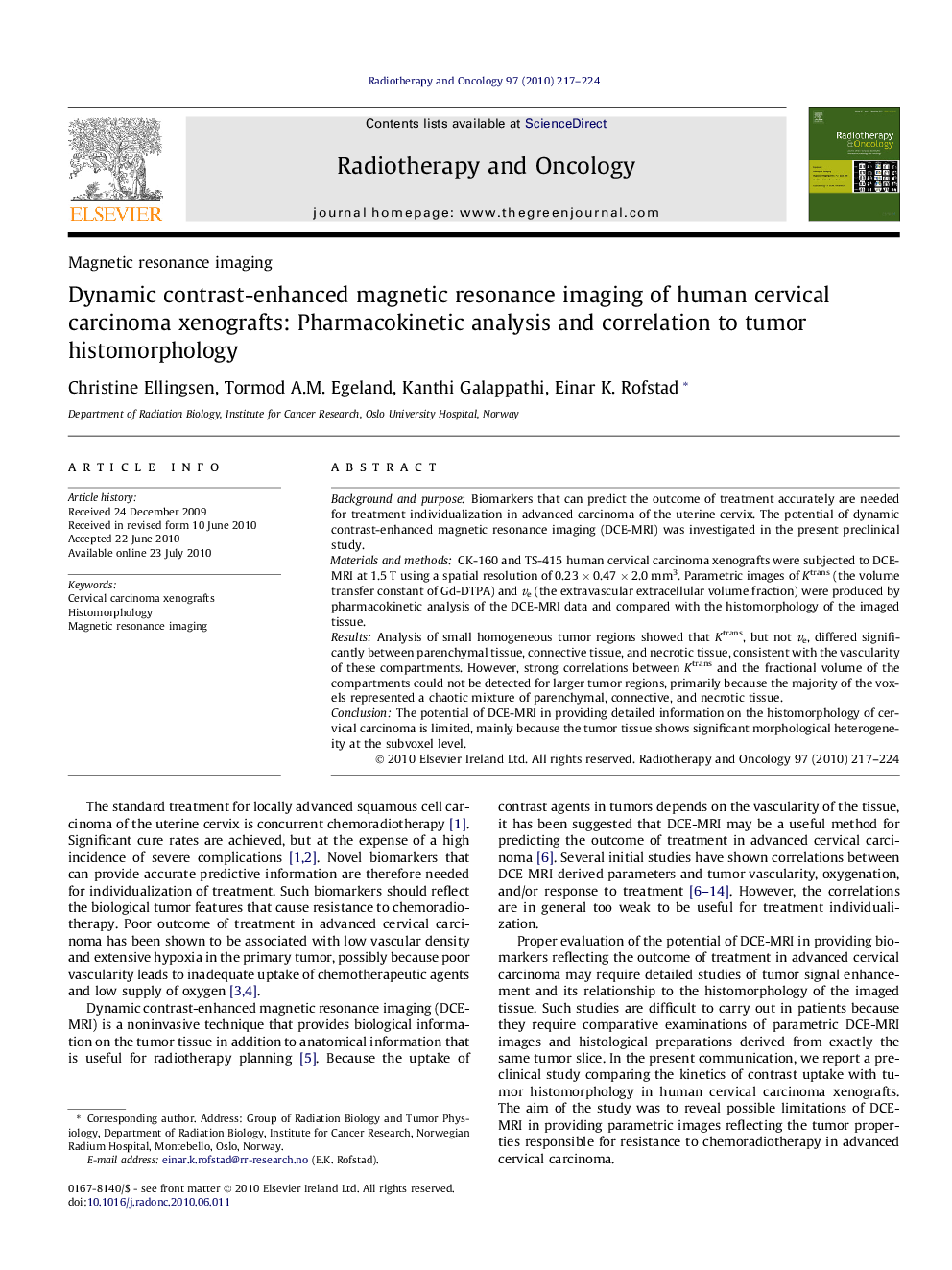| Article ID | Journal | Published Year | Pages | File Type |
|---|---|---|---|---|
| 2159151 | Radiotherapy and Oncology | 2010 | 8 Pages |
Background and purposeBiomarkers that can predict the outcome of treatment accurately are needed for treatment individualization in advanced carcinoma of the uterine cervix. The potential of dynamic contrast-enhanced magnetic resonance imaging (DCE-MRI) was investigated in the present preclinical study.Materials and methodsCK-160 and TS-415 human cervical carcinoma xenografts were subjected to DCE-MRI at 1.5 T using a spatial resolution of 0.23 × 0.47 × 2.0 mm3. Parametric images of Ktrans (the volume transfer constant of Gd-DTPA) and ve (the extravascular extracellular volume fraction) were produced by pharmacokinetic analysis of the DCE-MRI data and compared with the histomorphology of the imaged tissue.ResultsAnalysis of small homogeneous tumor regions showed that Ktrans, but not ve, differed significantly between parenchymal tissue, connective tissue, and necrotic tissue, consistent with the vascularity of these compartments. However, strong correlations between Ktrans and the fractional volume of the compartments could not be detected for larger tumor regions, primarily because the majority of the voxels represented a chaotic mixture of parenchymal, connective, and necrotic tissue.ConclusionThe potential of DCE-MRI in providing detailed information on the histomorphology of cervical carcinoma is limited, mainly because the tumor tissue shows significant morphological heterogeneity at the subvoxel level.
